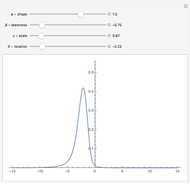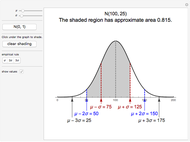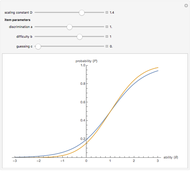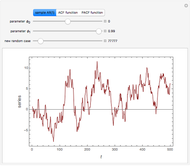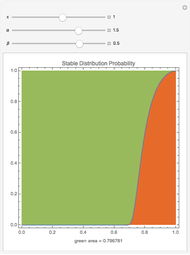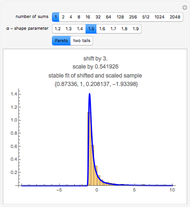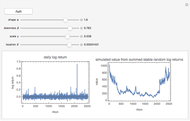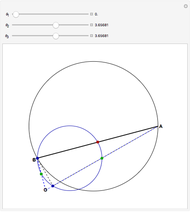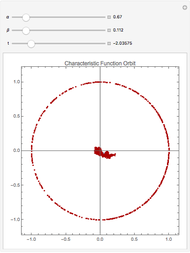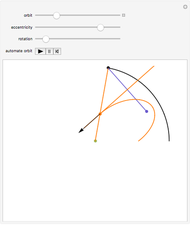Empirical Characteristic Function

Requires a Wolfram Notebook System
Interact on desktop, mobile and cloud with the free Wolfram Player or other Wolfram Language products.
The empirical characteristic function (ecf) of a random sample { ,
,  , ...
, ... } from a statistical distribution is defined by
} from a statistical distribution is defined by
Contributed by: Bob Rimmer (March 2011)
Open content licensed under CC BY-NC-SA
Snapshots
Details
The characteristic function of a statistical distribution is the Fourier transform of the derivative of its distribution function. A stable distribution is used in the example. Stable distributions lack for most cases a distribution function with an explicit formula. The standardized stable characteristic function, however, is straightforward:
 .
.
At  ,
,  , as must the empirical characteristic function. The ecf converges with the characteristic function most quickly where
, as must the empirical characteristic function. The ecf converges with the characteristic function most quickly where  is close to zero. As the sample size grows, the convergence becomes closer further from
is close to zero. As the sample size grows, the convergence becomes closer further from  .
.
Empirical characteristic functions can be used for parameter estimation in cases where the characteristic function of the statistical distribution is known. They can be used alone in the same way one would use a known characteristic function. For instance, the characteristic function of a sum of random variables is equal to the product of the characteristic functions of each independent random variable. Or a symmetrized characteristic function can be created from the product of the characteristic function and its conjugate. Examples and Mathematica code for use of empirical CharacterCode functions can be found at mathestate.
Permanent Citation














